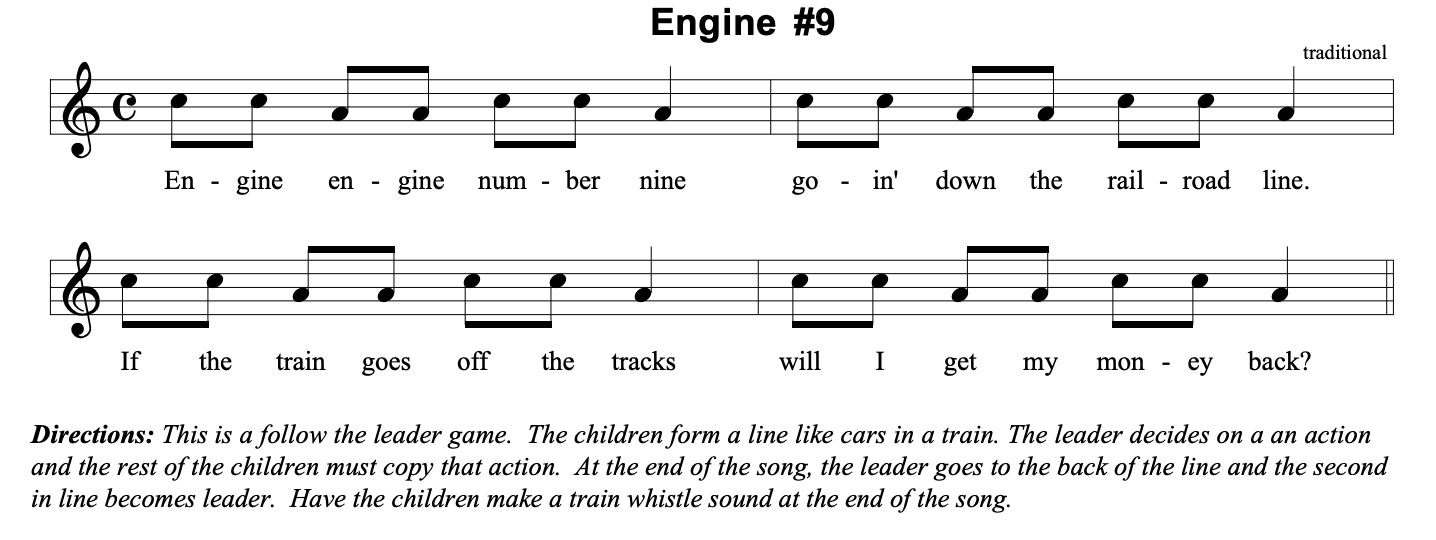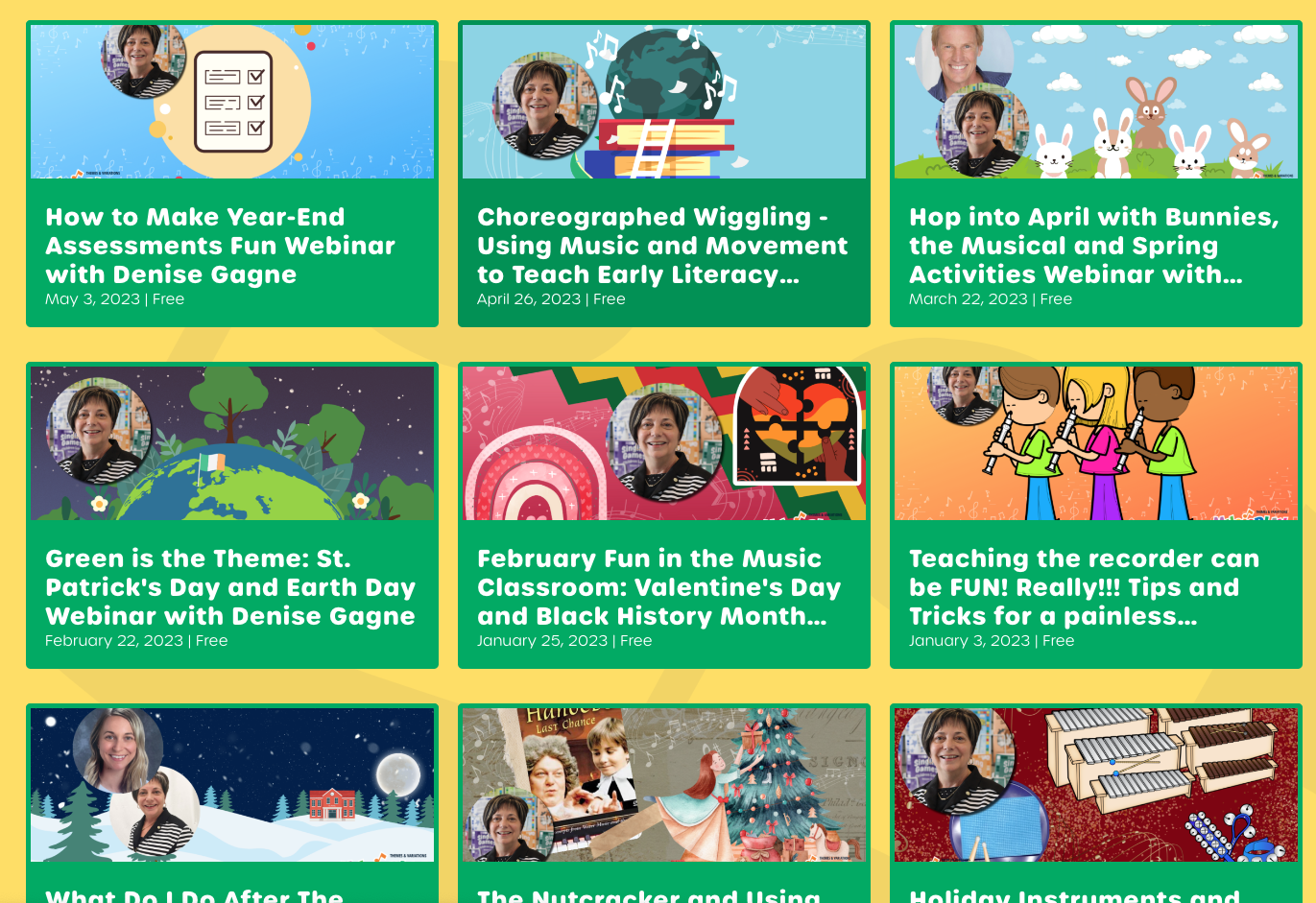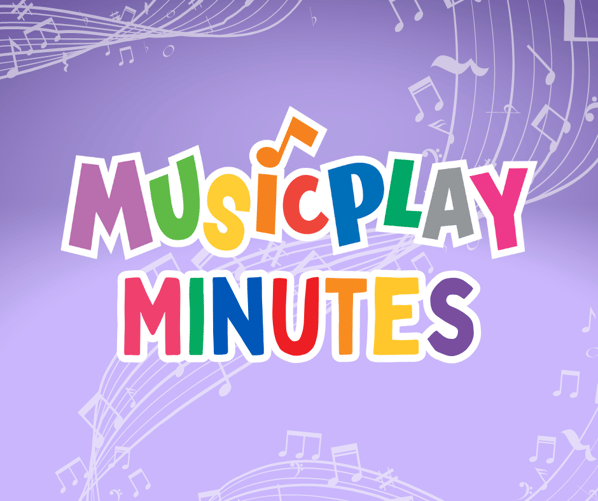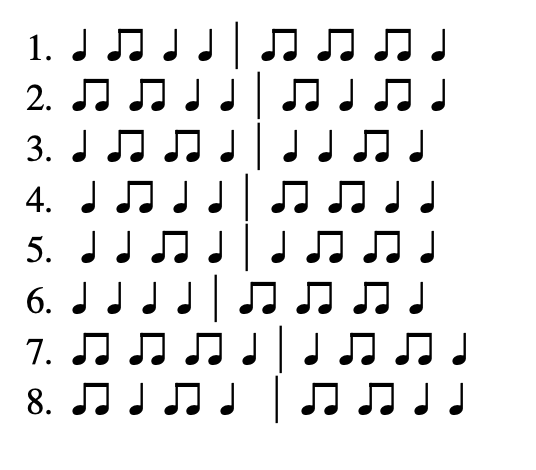Back to School

It’s already back to school for many teachers, and soon to be for many more. In this issue of the Musicplay newsletter some back to school ideas will be shared - how to learn all those names, seating plans, and discipline ideas.
The music specialist that teaches all the children in the school has a unique and really difficult challenge - learning all the names of the students! When I was teaching full time at two elementary schools I would have up to 700 students a week. If you don’t know the names, it’s really difficult to manage your classes effectively.
Listen to the rhythm
Listen to the beat
Tell me your name then take your seat!
My name is _______
My name is _______
My name is _______
My name is _______
Everyone says the chant. Then, one at a time the children say their names and then they sit down. I keep the beat on a different instrument each class - drum, triangle, woodblock, boomwhacker. I explain how the instrument is played and ask the students to describe what it is made of and how the sound is made. We classify it as wood, metal, drum or shakes/scrapes. At first the students are hesitant and often miss the beat. I gently correct, we chant again and go on. By the end of the month, they are much more confident, more accurate on the beat and I’ve learned the names!
In the new Musicplay for Kindergarten a similar chant is given. In this chant the instrument is named. Substitute a new instrument each class.
Listen as I play the beat.
Gee this drum sounds really neat.
This is such a silly game.
Sit down when you say your name.
My name is _______
My name is _______
My name is _______
My name is _______
Also in Kindergarten is the Cookie Jar chant. Write the names of each of the Kindergarten children on word strips. (or type them on computer enlarging the font to 150 and cutting them out) Write the chant on sentence strips and put the strips in your pocket chart. Leave a blank for the name. Pull the name strips out one by one and have the children find the beginning sounds and try to figure out who is named in the chant.
Zoom zoom zoom.
My heart goes kaboom.
Now who stole the cookies from the cookie jar?
_________ stole the cookies from the cookie jar?
Who me? Yes you!
Couldn’t be! Then who?
Put a new name strip in the blank space and repeat. Not only are you learning the names, but you’re reinforcing the early literacy efforts of the kindergarten teacher.
In Musicplay 3 and 5 the Concentration game is given. It is sung on so-mi (with a do at the end).
Concentration. Everybody ready?
When you hear your name the game begins.
Denise - Michael
Michael - Susan
Susan - David

The child sings their own name, then someone elses name. As we sing we tap a beat with one finger. If you miss a beat, we start the game over again - faster. Use this to review tempo terms.
“We were singing at a moderato tempo.
What is a tempo that is faster than moderato?”
When the children are better at the game you can play it as an elimination game if you like. All the children stand. If a child hesitates or misses a beat they are out and sit down. You still increase the tempo each time a child goes out. When you’re finally going prestissimo give up and start the game over.
Even if you’re a classroom teacher and know the students’ names well, your students will really enjoy this game. It’s a great time filler for those times in the school day when you have just 5 minutes. It’s an excellent way to review the notes so-mi-do if you’re teaching solfege.
Other Tips and Tricks for remembering names:
- Make a seating plan.
- Use the school digital camera to photograph every student, and then place their photo in a seating plan. This is helpful for you, but even more helpful for any substitute teachers that teach in your room.
- Line the students up at the end of class sending them into the line by calling their name. (from memory)
- Play singing games during class that require the use of students’ names. I use “Hey Betty Martin” and substitute names for Betty Martin. Hey there Jason, tiptoe tiptoe, Hey there Jason, tiptoe fine

- Sing “Willaby Wallabee Wee” an elephant sat on me and substitute all the names in your class. This song is on the orange or the green Raffi CD. (I’m so old it’s on my old Raffi record....)
- Don’t rush into teaching curriculum concepts - take the time to get to know your students, establish routines and learn the names.
Seating Plans
I heard Rodney Eichenberger speak at a Northwest Reading Session one year. He moves the singers in his choir around placing dark voices next to light ones and so on, until he has a nicely blended sound. In the classroom, I like to adapt this idea when I make a seating plan. This is how I would aim to have 3 rows of students. This is for a class with more boys than girls. Sometimes I have to sit 3 girls together or 3 boys together if the class is really lopsided. Adapt according to the class. When I’ve said “strong” voices, I mean in-tune singers. Weak voices are the out-of-tuners.
2 strong voices (boys) 2 weak voices (girls) 2 strong voices (boys) 2 weak voices (girls) 2 strong voices (boys)
2 weak voices (girls) 2 strong voices (boys) 2 weak voices (girls) 2 strong voices (boys) 2 weak voices (girls)
2 strong voices (boys) 2 weak voices (girls) 2 strong voices (boys) 2 weak voices (girls) 2 strong voices (boys)
I try to start them out beside one child that is same sex. If they cause a problem - guess what? They get split up and they end up being the only boy or girl in the class surrounded by opposites.
I also like to have the students know their class list order - alphabetical order. I like them to be able to make a circle in class list order. I use the game “Stella Ella Olla” to assess how well they keep a beat, and it’s really simple to do the assessment on my class list if they are in alphabetical order. It usually prevents the major problem students from being next to each other. (Although not always...)

Directions: The children are seated crosslegged on the floor in a circle. Each child extends their hands, palms facing up. Each player puts the right hand over the hand of the person on the right and the left hand under the hand of the person on the left. The player who begins claps the right hand of the person on his left with his/her right hand. The clapping moves clockwise around the circle. On the last word of the song, “five”, the player who is about to be hit must pull his or her right hand away or he is out. If player 5 pulls away in time #4 is out.
One of the assessment tricks I figured out a couple of years ago was to have the students stand in class list order to sing a longer song with an accompaniment. I choose a song that is 2-3 minutes long that we’ve worked on for 2- 3 weeks so the students know it well.They could be in lines or in a circle. I put the track on and then listen to each child for about 2-3 seconds. I know very quickly if they’re matching the pitch of the class and the track, and can make a note on my class list just as quickly. In 4-5 minutes I’ve completed the assessment.
To form a double circle with a class I sing (to the tune of London Bridge)
Take a partner follow me, follow me, follow me
Take a partner follow me, follow me around.
The children sing as they find a partner and follow, continuing to sing until they are in double circle formation.
An excellent idea for a kindergarten seating plan is to have colored dots. You can purchase rubber dots from teachers stores, or you could make your own by laminating circle of colored construction paper. (These could double as notes when you play floor staff relay games) Before they come into your room, place the colored dots on the floor. As the children enter, tell each one what color they are to sit on. They will enter in a more orderly fashion and you’ll help them to learn their colors!
Routines
Establishing the tone at the beginning of the school year can make the difference between fun and frustration for you the teacher. I used to be so excited about getting into the curriculum that I didn’t spend as much time as I should have establishing procedures.
First Day: Take time to talk about “what ifs” and “how tos”. Extraordinary situations can occur anytime in the school year - if a situation happens on Day 2 will your students be prepared for it? You need to know how you will deal with bathroom breaks, line-ups and explain it to your students.
- How do you enter the music room?
- Where do you sit? How do you get to your seat?
- What do you need to bring with you to music class?
- How do you line up at the end of class?
- What do you do if you have to go to the bathroom?
Out of the ordinary situations could include:
- What do you do if you feel like you’re going to be sick? (In my school there were no daytime caretakers - if a student got sick, I had to clean it up. After that, we talked about heading right for the garbage can if you have to be sick.)
- What is the procedure if there is a fire drill?
Lineups - End of Class:
I like to have a movement activity at the end of a class that leads them into the lineup. For the classroom teacher these are useful after gym classes. Some of the games that I’ve used include:
- Engine Engine #9 (in Musicplay 1/2)
- Snail Snail (in Musicplay 1)
- Hop Old Squirrel (in Musicplay 1)
Some of the songs in the new Musicplay for Kindergarten were written to help with lineups in the music class or after a phys-ed class.
- Put your finger on your lip
- Walk to School



Musicplay Workshops
Registration for Musicplay Live in Washington, DC; Austin, TX; and Virtual is open!
Check out our collection of FREE webinars here!

Musicplay Minutes Podcast

Listen to our newest podcast on ideas for St. Patrick's Day and Earth Day!

.png?width=483&height=405&name=MusicplayLive%202023%20Sing!%20Say!%20Dance!%20Play!%20With%20Artie%2c%20Denise%2c%20and%20JJ%20Locations%20FB%20(2).png)
